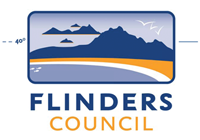Furneaux Island Group
About the profile areas
The 2023 Estimated Resident Population for Furneaux Island Group is 933, with a population density of 0.47 persons per square km.
Location and boundaries
The Furneaux Island Group is located in Bass Strait, Tasmania. The Furneaux Island Group is located about 20 kilometres north-east of Cape Portland, northern Tasmania, and 150 kilometres south-east of Wilsons Promontory, southern Victoria. The Furneaux Island Group includes numerous islands, the largest being Flinders Island.
Name origin
The Furneaux Island Group is named after Captain Tobias Furneaux, commander of Captain Cook’s support ship, HMS Adventure. It is also known as Flinders Island Council.
Important
|
Population933 2023 ABS ERP |
Land area1,994 square km |
Population density0.47 persons per square km |
Settlement history
European settlement dates from 1798 when sealing was established at Cape Barren Island, operating until 1828. From 1833 to 1848 Tasmania’s remaining Aboriginal people were exiled to a mission at Wybalenna on the west coast of Flinders Island. Land was used largely for cattle and sheep grazing, mutton birding and fishing. Population was minimal until the late 1800s. There was an influx of settlers just prior to WWI, with greater growth in the 1950s due to the Soldier Land Settlement Scheme. The population peaked in the early 1960s at about 1,400 people, and then declined during the 1970s and 1980s. The population continued to gradually decline from the early 1990s, falling from about 900 in 1991 to about 750 in 2011.
Land use
The Furneaux Island Group features rural and rural-residential areas, with national parks, coastal reserves and lagoons. Rural land is used largely for agriculture, particularly sheep and wool production, cattle grazing and fishing (crayfish, abalone and scale fish). Tourism is also an important industry. Flinders Island is the largest island, and the main residential and commercial centre. The main townships on Flinders Island are Whitemark and Lady Barron, with smaller townships at Emita and Killiecrankie. There is also some permanent residential population on Cape Barren Island and Clarke Island. Many of the smaller islands are nature reserves owned by the Crown, others are managed by the Aboriginal Land Council of Tasmania, while others are held privately or leased mainly for sheep grazing. The Furneaux Island Group encompasses a total land area of about 2,700 square kilometres.
Transport
The Furneaux Island Group is served by Flinders Island (Whitemark) Airport and the ferry from Bridport in northern Tasmania.
Major features
- Major features of the Furneaux Island Group include Flinders Island,
- Cape Barren Island,
- Clarke Island,
- numerous smaller islands,
- Strzelecki National Park,
- Wingaroo Nature Reserve,
- North East River Game Reserve,
- Patriarchs Wildlife Sanctuary,
- numerous beaches,
- Mount Kerford,
- Mount Killiecrankie,
- Mount Leventhorpe,
- Mount Munro,
- Mount Strzelecki,
- Mount Tanner,
- Furneaux Museum,
- Unavale Vineyard,
- Wybalenna historic site,
- Flinders Island Sports Club,
- Port of Lady Barron,
- Whitemark Port,
- Cape Barren Island School,
- Flinders Island District High School,
- various walks,
- several shipwrecks,
- numerous conservation areas and a number of Muttonbird Reserves.
Included areas
- The Furneaux Island Group encompasses Flinders Island (the localities of Blue Rocks,
- Emita,
- Killiecrankie,
- Lackrana,
- Lady Barron,
- Leeka,
- Loccota,
- Lughrata,
- Memana,
- Palana,
- Ranga,
- Strzelecki,
- Whitemark and Wingaroo),
- Cape Barron Island,
- Clarke Island,
- and numerous smaller islands. Smaller islands include Anderson Island,
- Babel Island,
- Badger Island,
- Battery Island,
- Beagle Island,
- Big Green Island,
- Bird Island,
- Boundary Islet,
- Boxen Island,
- Cat Island,
- Chalky Island,
- Cone Islet,
- Craggy Island,
- Curtis Island,
- Deal Island,
- Devils Tower,
- Doughboy Island,
- Dover Island,
- East Island,
- East Kangaroo Island,
- East Moncoeur Island,
- Erith Island,
- Forsyth Island,
- Goose Island,
- Great Dog Island,
- Gull Island,
- Hogan Island,
- Inner Sister Island,
- Isabella Island,
- Judgement Rocks,
- Key Island,
- Little Anderson Island,
- Little Badger Island,
- Little Chalky Island,
- Little Dog Island,
- Little Goose Island,
- Little Green Island,
- Little Island,
- Long Island,
- Middle Pasco Island,
- Mile Island,
- Mount Chappell Island,
- Night Island,
- North East Isle,
- North Pasco Island,
- Outer Sister Island,
- Passage Island,
- Pelican Island,
- Preservation Island,
- Prime Seal Island,
- Puncheon Island,
- Ram Island,
- Reef Island,
- Rodondo Island,
- Round Island,
- Roydon Island,
- Rum Island,
- Sentinel Island,
- South Pasco Island,
- South West Isle,
- Spike Island,
- Storehouse Island,
- Sugarloaf Rock,
- Tin Kettle Island,
- Twin Islets (north),
- Twin Islets (south),
- Vansittart Island,
- West Moncoeur Island and Wybalenna Island.
